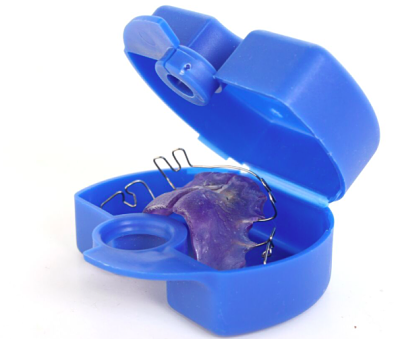In an earlier blog post, I wrote about the first rule of retainers: that they should be worn for life. If you’ve seen the movie “Fight Club,” then you probably know the second rule of retainers: they should be worn for life. In that earlier blog post, I defined “relapse” as the tendency for teeth to want to move after orthodontic treatment. I also gave a few details about relapse:
- Relapse is unpredictable
- Relapse can happen throughout a lifetime
- Wisdom teeth are not the only (or even the major) cause of relapse
- Relapse is greater in lower teeth than in upper teeth
That blog post spawned some questions about relapse that I’d like to address here:
Question: Why does relapse occur?
Answer: Relapse occurs for a variety of reasons. The two biggest reasons are:
- Forces involved with chewing. Chewing generates very strong forces on the teeth. Most of the force is transmitted up and down, down the roots of the teeth and into the jaw bones. But, forces also get directed toward the front of the mouth because teeth usually have a slight angulation toward the font of the mouth. Over time, the accumulation of these forces (and without retainers) results in crowding of teeth in the front of the mouth. This is thought to be the main cause of relapse and the reason why people without wisdom teeth have similar rates of crowding of teeth and orthodontic relapse.
- “Muscle memory.” It’s not exactly muscle, but the gums have fibers running through the
 m and those fibers have some memory to them. The fibers do reorganize over time, but this is the primary culprit of relapse that occurs soon after orthodontic treatment. The tendency for teeth to want to move after orthodontic treatment is greatest within the first year, probably because of this “muscle memory.”
m and those fibers have some memory to them. The fibers do reorganize over time, but this is the primary culprit of relapse that occurs soon after orthodontic treatment. The tendency for teeth to want to move after orthodontic treatment is greatest within the first year, probably because of this “muscle memory.”
Question: You said that gum fibers will reorganize over time. Does that mean leaving braces on longer will help reduce the likelihood of relapse?
There is conflicting evidence on this idea. On one hand, extending time in treatment *may* help reduce the risk of relapse but it will also increase the risk of other bad things that are associated with long orthodontic treatment such as increased risk of cavities, increased risk of gum disease, increased risk of damage to roots. Ultimately, the best way to hold the position to the tooth while allowing the gum fibers to reorganize is with retainers.
Question: Is relapse a sign of bad treatment?
No! Because of the forces involved with chewing, no tooth position is 100% stable over a lifetime. There are some positions that are more stable than others, but no tooth is exempt from orthodontic relapse. This is why retainers should be worn for a lifetime!
Question: What about growth after orthodontic treatment?
Generally speaking, when you put teeth in a good relationship with each other (“a good bite”), they tend to want to stay that way. Most young patients still grow after their treatment is complete, and, if they wear their retainers, most of these patients keep that “good bite.” The most notable exception to this are patients who have exceptional growth of the lower jaw after treatment and sometimes their growth outpaces the ability of the teeth to preserve the “good bite.”

